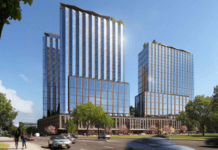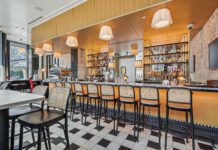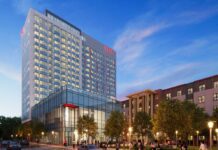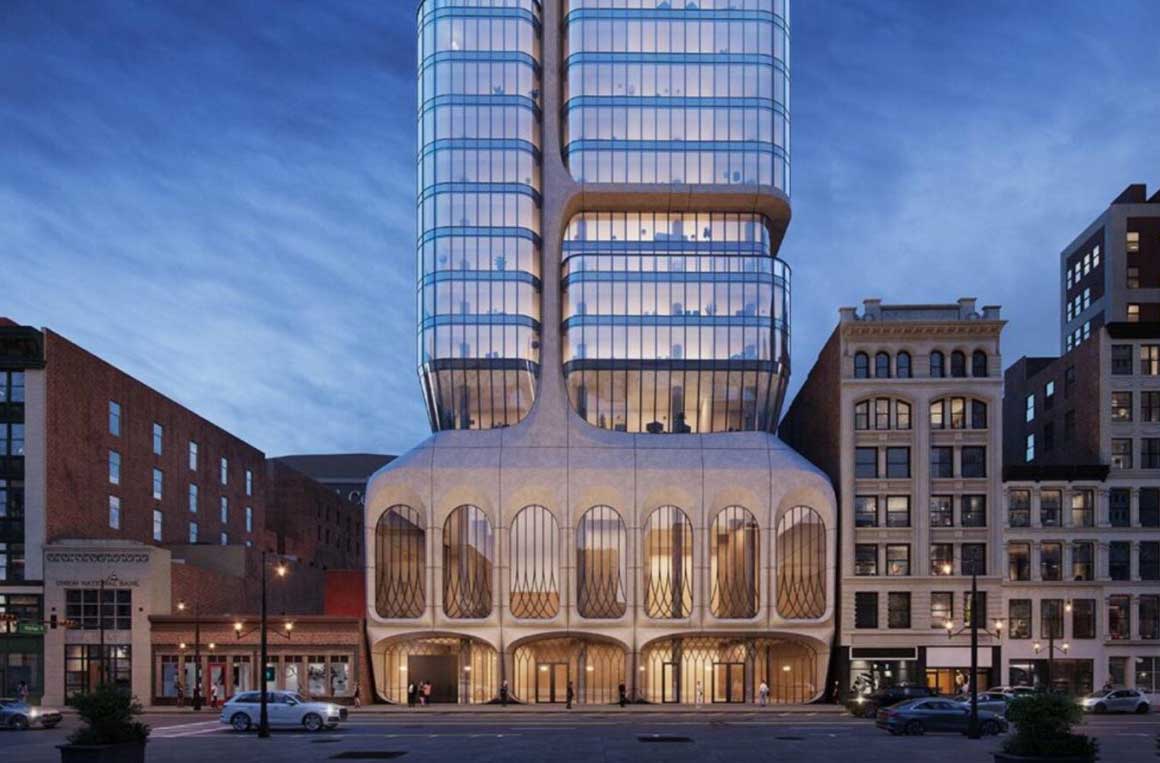
When you think of the architects behind Newark’s most iconic buildings, Frank Grad, James Betelle, Stanford White, and Wilson Ely come to mind. But if Murat Mutlu’s four glass skyscrapers are eventually built, it would be impossible not to include him among that list of greats.
The founder of Manhattan-based design firm INOA has been on a tear the last four years, seeing four of his 40-plus story buildings approved in Newark: the Halo tower at 289-301 Washington Street, which is currently under construction, Arc Tower at 571 Broad Street, the Summit Tower at 200-208 Market Street, and the Nova Towers at 16-38 William Street. Mutlu said one other skyscraper is currently in the works with the KS Group on Mulberry Street.
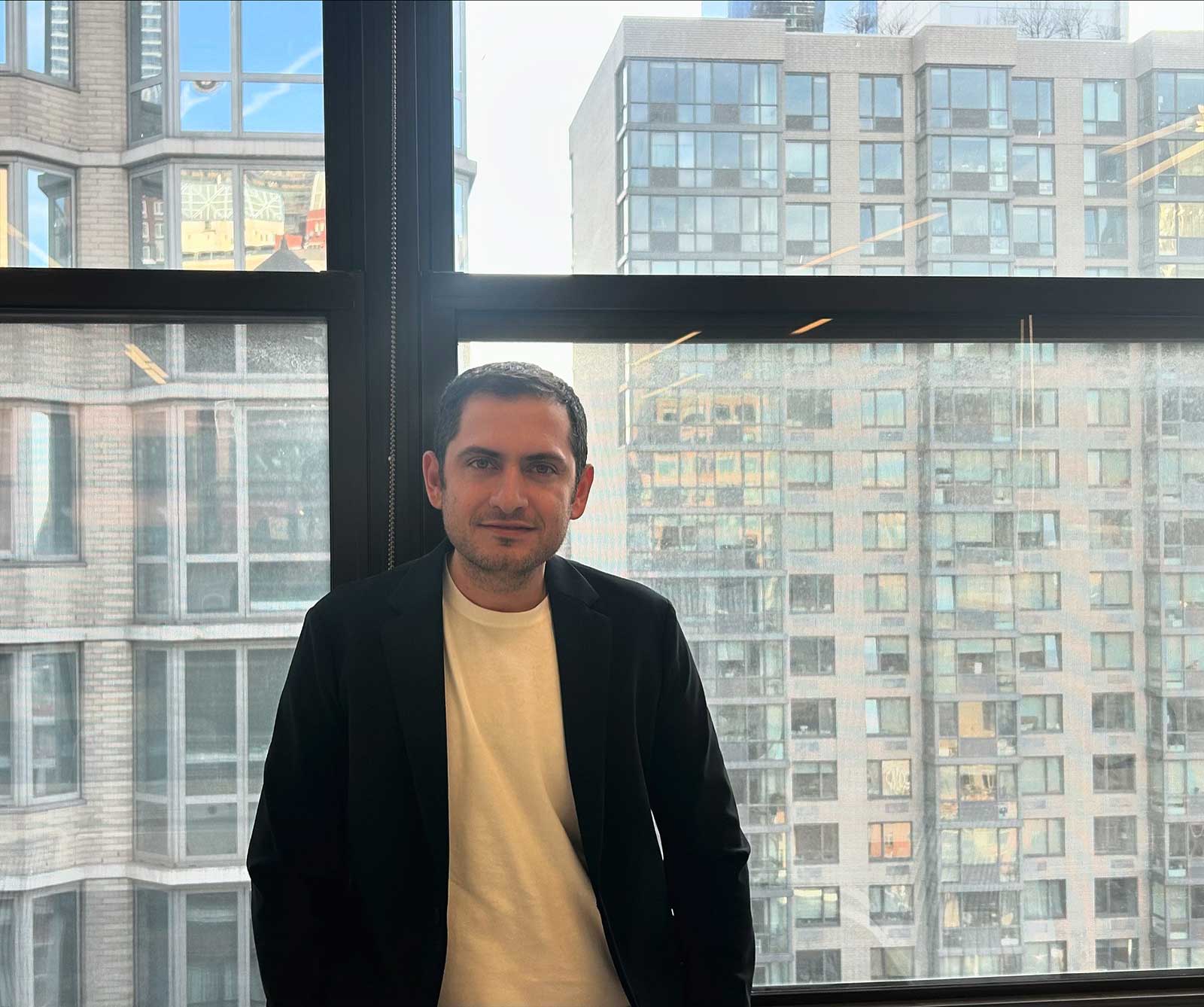
“Being part of the new skyline, we’re proud of that,” he said. “But it’s really not something we have in mind daily.”
After spending time with Mutlu at INOA’s modest, white-walled Midtown office, that was precisely the kind of self-effacing answer I came to expect. In a line of work with no lack of ego and pretension, the 39-year-old architect, dressed in a plain white T-shirt for our interview, is a disarming mix of down-to-earth and approachable. However, looking at his resume, you will see that he has every reason not to be. After graduating from Cornell University and MIT, Mutlu interned for Zaha Hadid’s firm in London, where he worked on the celebrated Heydar Aliyev building in Baku, Azerbaijan.
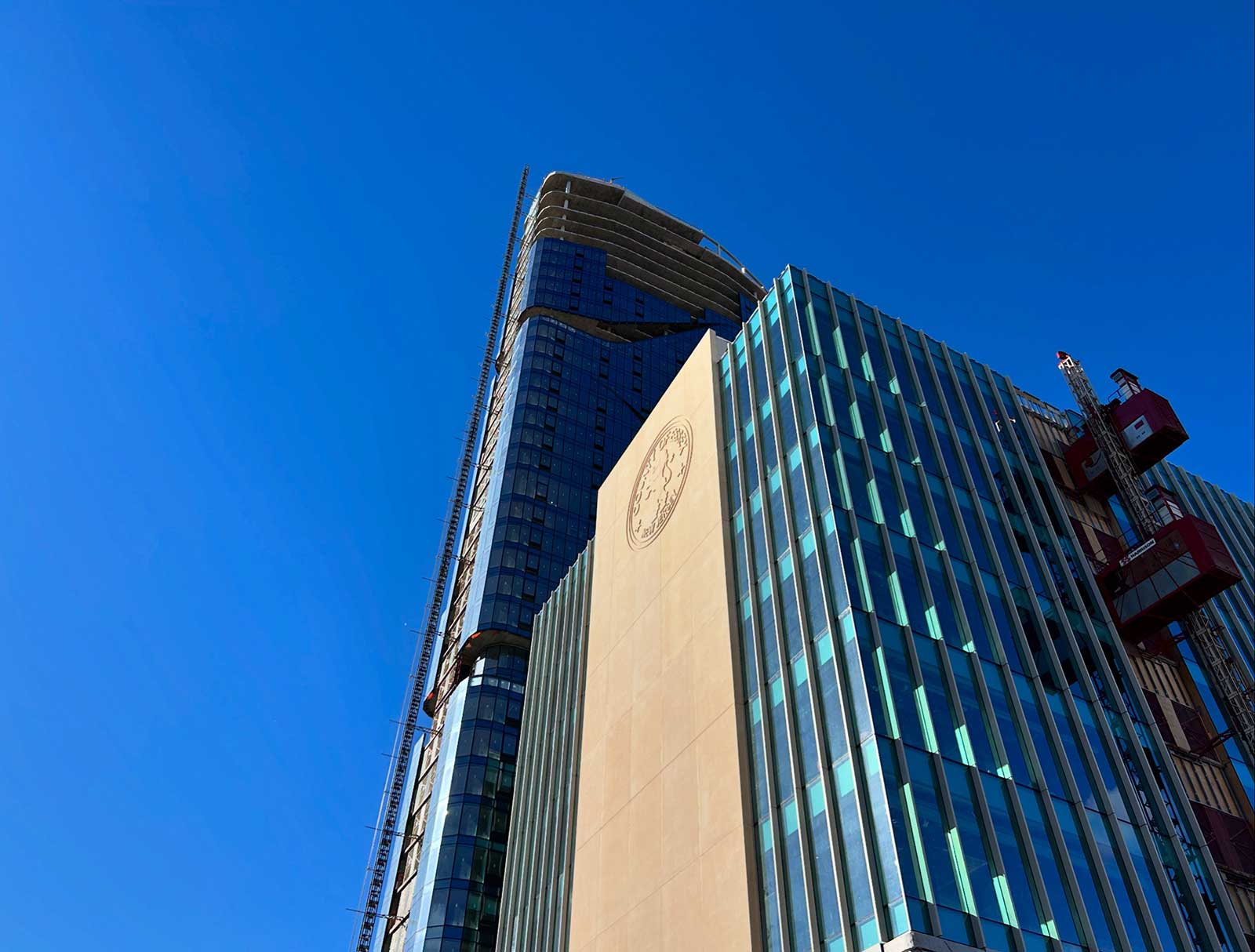
In 2010, Mutlu broke out in his own. His firm, INOA, began as an interior design firm with his first commission being the medical office of a fellow MIT grad. His first architectural commission was a modest three-story row house in 170 Grand Street in Jersey City.
It’s impossible to discuss Mutlu’s potential impact on Newark without mentioning KS Group. Together, they have joined forces on two—soon to be three—skyscrapers that have gained city approvals along with other buildings. The ongoing collaboration began with the Hoyt Tower at 50-54 Sussex Avenue, which opened in August, and the rest is history.
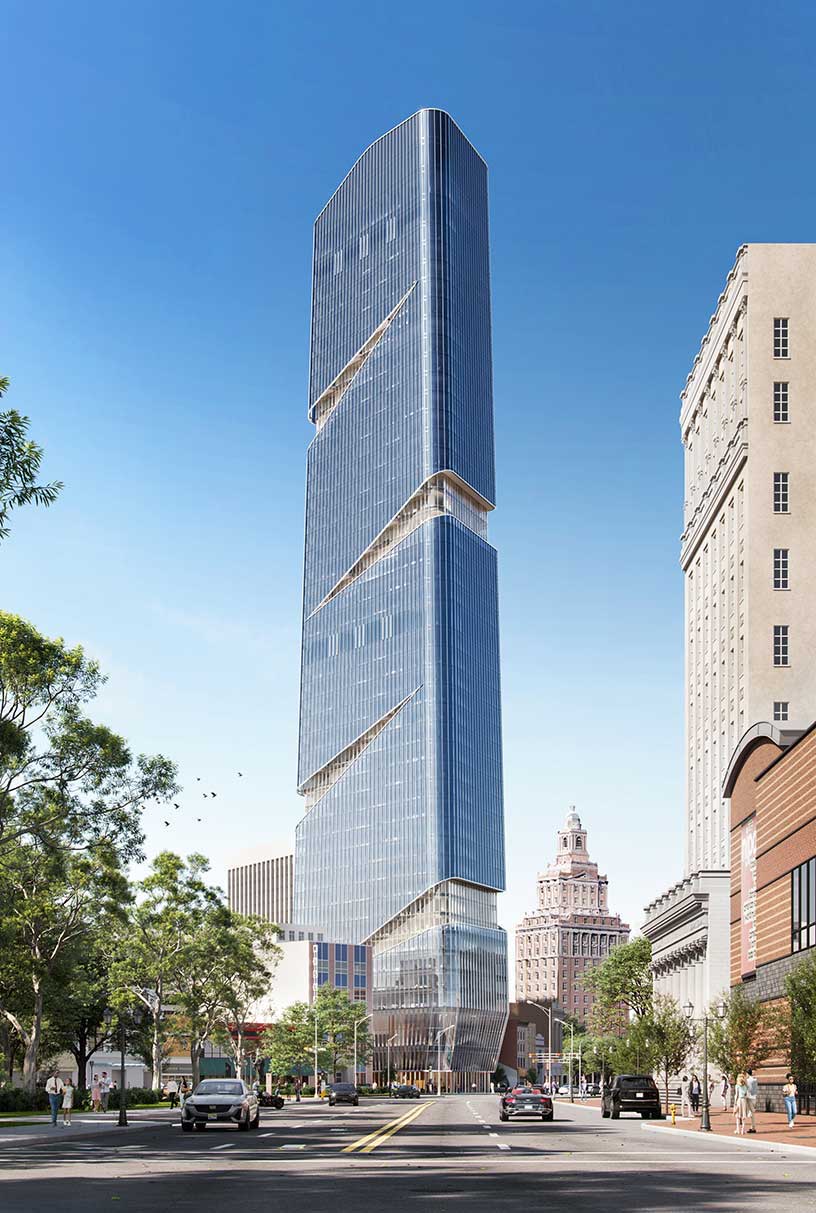
“Not only is he a great architect but he’s good at solving issues that come with planning,” said Daniel Spiegel, cofounder at KS Group. “When you design a skyscraper, a lot of technical issues come up and there are a lot of needs to be met in addition to the design.”
Speigel said Mutlu has a knack for mishmashing historical references with flashy modern designs. That comes in handy in Newark, where the commercial district is populated with century-old buildings. A shining example of this is the Summit Tower, where the tower’s podium combines Hadid-esque curves with wisps of classical arches.

Often the importance of a city is measured by its skyline. Tall architecture has the unique ability to inspire pride in otherwise economically crestfallen cities. Look at Oklahoma City, where the mere news of a skyscraper made national news. In a place like Newark, with world-class transportation infrastructure, a solid arts scene, and a 300-year history, the only piece missing from Newark’s puzzle is a large population of residents living downtown, Murat said. That’s what his skyscrapers promise.
“Newark is a town that’s growing but it’s underutilized,” he said. “It has the infrastructure to be better but it hasn’t fulfilled its full potential. I keep telling people, now is the time to invest in Newark.”
Of course, there are also people who fear change – residents who see the type of structures Mutlu designs as harbingers of gentrification and displacement rather than progress. To Mutlu’s credit, none of the skyscrapers he has designed displaced a single resident – all of them will be built on formerly vacant lots or empty dilapidated historic buildings.
“That’s not a credit I’ve earned, it just happens to be that way,” Mutlu said. “Newark’s downtown is already empty, you have all these parking lots. Now we’re using them to create apartments – that’s not gentrification from that perspective.”
Newark’s history has taught residents to be skeptical of skyscrapers, fearing them to be either potential cash deposit boxes — look at the empty condos on Manhattan’s billionaire’s row — or real-estate gimmicks intended to drive up property values. That’s what some have accused Harry Grant’s infamously never-built Broad Street 121-story USA Tower.
But the four approved towers Mutlu designed have all been rentals, so the developers behind them have no financial incentive to keep them empty. The one thing that could immediately quash such rumors surrounding Mutlu’s skyscrapers is for the developers to put shovels into the ground. Mutlu said the Summit Tower should begin construction sometime next year. The Arc Tower, which is an Oceanview Capital project, has no set schedule, he said.
Perhaps the most headwind Mutlu has encountered is with the Landmarks Commission. Newark has a lot in common with places like New Brunswick in that the commercial district overlaps with important historic districts. Often new proposed buildings come at the expense of demolishing century-old buildings.
“Most of the sites we’ve worked on, the buildings will all eventually fall on themselves – especially the Summit Tower site, that building has trees growing inside it,” Mutlu said. “This is the phenomenon across downtown – these buildings are in bad condition.”
An argument can be made that because Newark has lost so much of its history, preservationists are justified in fiercely safeguarding whatever is left.
“Even if what remains is not the best historical quality, it is what we have,” said Myles Zhang, an architectural historian who sits on the city’s Landmarks Commission.
That said, local preservationists have been surprisingly forgiving when it comes to the demolition of long-neglected historic buildings. What seems to irk them more is the height and unapologetically contemporary aesthetic of Mutlu’s towers. In the case of the Summit Tower, the Landmarks Commission capped the height of the building to match the height of the tallest historic building in the neighborhood, which is the Wilson Ely-designed National Newark Building.
In the case of the Nova Towers, which the Landmarks Commission approved last month, Zhang petitioned Mutlu to recycle the century-old historic ornamentation of the existing, soon-to-be-demolished building into the new facade. But without support from Zhang’s fellow commissioners, that suggestion was never made a condition of approval. Mutlu told Jersey Digs he intends to salvage some of the historic building’s ornaments for use in the lobby.
After Jersey Digs’ interview with Mutlu, he said he had a community meeting to discuss a new project at 222-238 Bloomfield Avenue that encountered some resistance from neighbors, mostly about congestion and street-parking issues, but also about the design not fitting the historic fabric of the North Ward.
“Bloomfield Avenue has mixed architectural language,” said Mutlu, defending his design. “Architecture is about what is now, not the past or future, but right now,” Mutlu said. “Right now, glass facades are practical, previously architects had bricks so that’s what they used.”
At the end of the hour-long conversation — discussing everything from Planning Board meetings to local subreddits — Mutlu, threw on a black blazer for a photograph, then walked me to the elevator, this time, speaking more casually. “I keep telling clients that good designs sell,” Mutlu said. “Don’t be concerned – what’s coming up is going to be great.”
